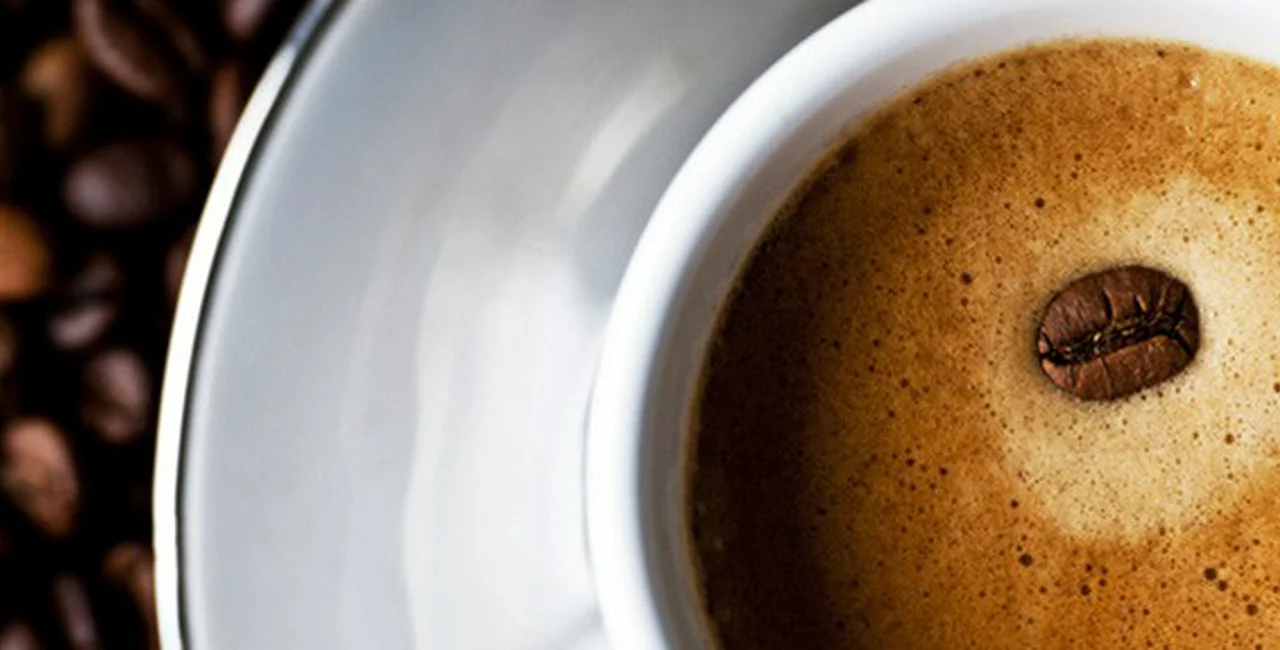For years, I was an unappreciative bystander in the world of coffee. Each weekend my parents would do bewildering things with filter papers and a coffee pot heated by a tea-light candle, while I observed from a safe distance and stuck to orange squash.
I always liked the smell of coffee, however. At weekends, the aroma would permeate our house. But like many children, I couldn’t stomach the strong flavour. Fast-forward a few years and I was a history student at university. With a perpetual hangover, an increasingly sophisticated palate, and only five hours of lectures per week, I clearly had nothing better to do than develop a caffeine habit. Early in my first term I quite literally woke up and smelt the coffee.
I am ashamed to say that for many years my coffee dabblings consisted only of instant coffee and overly milky Starbucks cappuccinos. Whilst I liked trotting around London town in stilettoes, coffee in hand a la Ally McBeal, I still had a lot to learn.
A few years later and my tastes are more refined. Coffee, like wine, is a world unto itself, with different methods, competing traditions and techniques, and not a little industry-snobbery.
Living in Prague offers its own caffeine opportunities. Like much of continental Europe, the Czech Republic has a historic café culture, which has begun to give way to both international chains, and modern independents. This article introduces some of the most common types of coffee (as well as some local variations), as well as how to prepare a delicious cuppa at home.
Espresso or Presso?
Traditional Italian espresso (note: not expresso, contrary to common pronunciation) is typically made by forcing hot water under high pressure through tightly compacted, finely ground coffee. Espresso can be made by special machines, stove top espresso makers, and hand operated devices.
The result is a very concentrated coffee drink, which is why espresso often forms the base for other drinks, such as lattes and cappuccino.
Many older kavárny offer a local twist in the form of Czech preso, which is served with milk or high-fat creamer (preso s mlékem). Presso tends to be similar to café lungo, which is essentially an espresso with hot additional water. As more international chains infiltrate Prague’s historic café market, this practice is slowly changing and true espresso is increasingly common.
Cappuccino
A cappuccino is an espresso-based coffee, topped with hot milk and then foamed milk. Some establishments tend to make these too milky, or otherwise omit the hot milk altogether. True cappuccino includes coffee, milk, and foam as equal thirds.
Caffé Latte
Caffé latte is espresso with topped with steamed milk (rather than the other way around: a latte macchiato is espresso added to milk). This long coffee is typically a breakfast drink in Italy, although dairy-hungry Europeans and Americans seem to enjoy them at any time of day.
Turecká káva
Perhaps the most truly ‘Czech’ coffee, turecká káva has relatively little in common with its Turkish namesake. This murky substance is made by pouring boiling water over ground coffee. The drink is consumed with the dregs still in the bottom of the cup, with the drinker using their teeth as a filter! For previous generations, coffee supplies could be scarce or an expensive luxury, and so ‘coffee substitutes’ were also used to make turecká káva, including roasted rye, barley and chicory. This is known as melta.
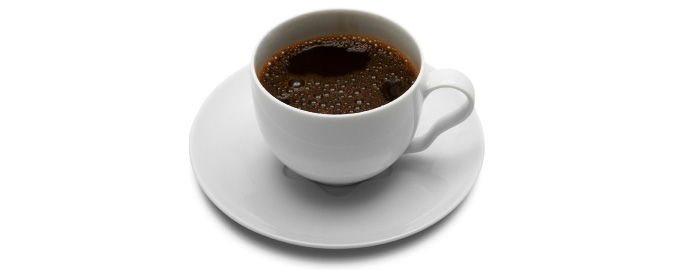
Whilst the most relaxing way to enjoy any of these drinks is on a sunny street corner, watching the world pass by, it is also perfectly possible to make great coffee at home.
Buying Coffee:
It’s true that a bad workman always blames his tools, but you really can’t make great coffee without decent beans. Aim for whole beans that have been recently roasted and grind as needed – ground coffee expires more quickly due to its increased surface area exposed to air.
Most potraviny and supermarkets sell ground coffee in sealable bags, but remember: you get what you pay for and supermarket coffee is unlikely to be very fresh.
A number of cafes sell their house blends. MamaCoffee imports beans ‘green’ and roasts them just outside Prague to retain optimum freshness: tasty coffee with a FairTrade conscious.
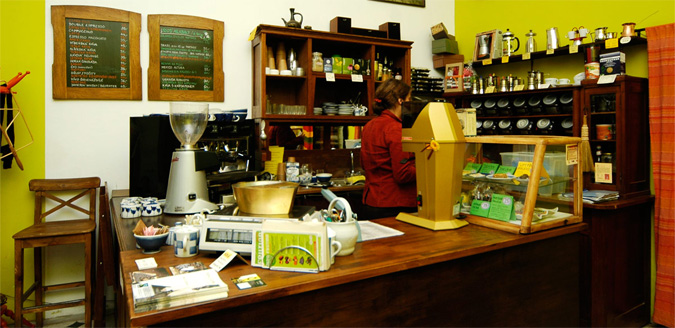
MamaCoffee Fairtrade coffee roasting house
Store
Coffee is perishable. Keep it dry, at room temperature (not in the fridge) and as airtight as possible, and store for up to two weeks. Job done.
Grind
If you buy whole coffee beans, you’ll need to grind them. There are a few types of grinders, but the most practical for easy, quick home use is the ‘propeller grinder’, which has a two-sided single blade like a propeller. Try Potten & Pannen for original-style Peugeot-patented grinders.
Můj šálek kávy sells delicious Doubleshot beans, and will grind them on request if you don’t have your own grinder.
Brew
There are many ways to brew coffee – resulting in different strengths and drinking experiences. One of the easiest ways to brew a ‘long’ coffee (rather than espresso) is to use a French Press (also known as a caffetiere, plunger or Bodum Press). This method essentially involves putting ground coffee in a glass container with hot water and allowing the two to brew, before pushing the plunger down to filter out the ground coffee. A standard rule of thumb is to use one tablespoon of ground coffee per cup, and to brew for four minutes.
You can buy French press in most kitchenware stores now – try Tescoma or Potten & Pannen in Prague, or any anywhere in between.
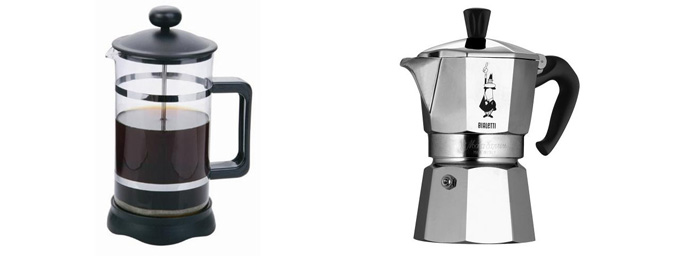
For espresso-based coffee, there is potential to splash out to your heart’s content. New to the market is the DeLonghi PrimaDonna ESAM 6900, which will make espresso-based drinks galore, as well as longer coffees and sumptuous hot chocolate. Espresso, cappuccino, latte and macchiato – this grinds, brews, steams, froths, and foams, for a truly ‘bean-to-cup’ experience.
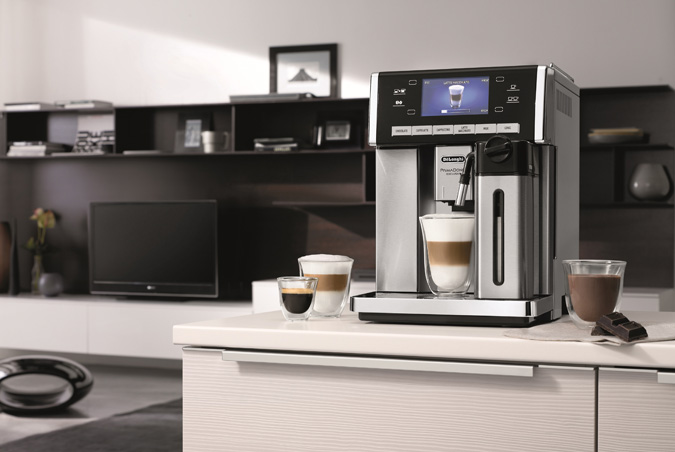
DeLonghi PrimaDonna Exclusive ESAM 6900, first coffee maker making hot chocolate
Whether you’re craving capuccino, longing for latte, or just balmy about beans (sorry), you’ll find what you need in Prague. If you like to drink coffee but aren’t so keen on making it, check out our café reviews for some of the best places in Prague to enjoy a cup of the good stuff.
***
Helen Ford is a creator of CzechingIn, a blog about an English lady in Prague. She now writes for Expats.cz on topics such as theatre, art, and recently also café and tea rooms in Prague.
Related articles












 Reading time: 5 minutes
Reading time: 5 minutes 